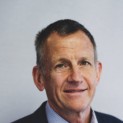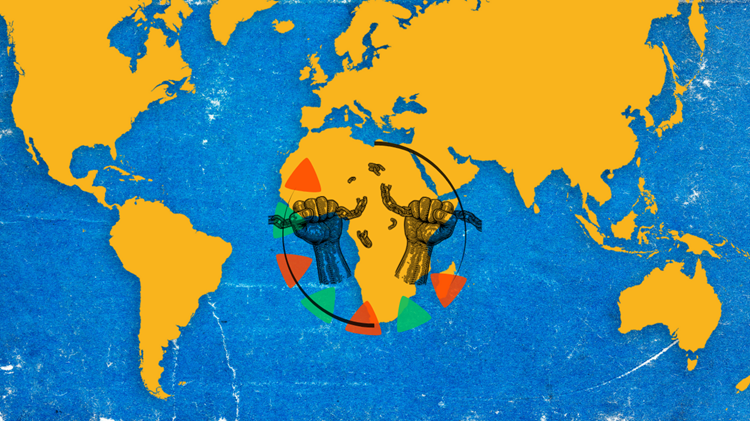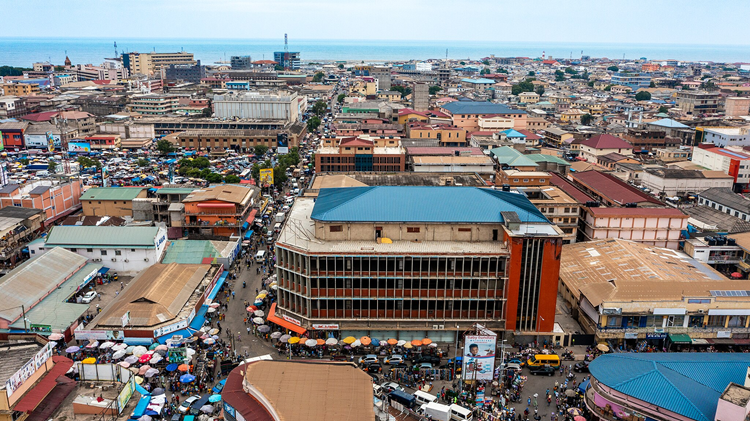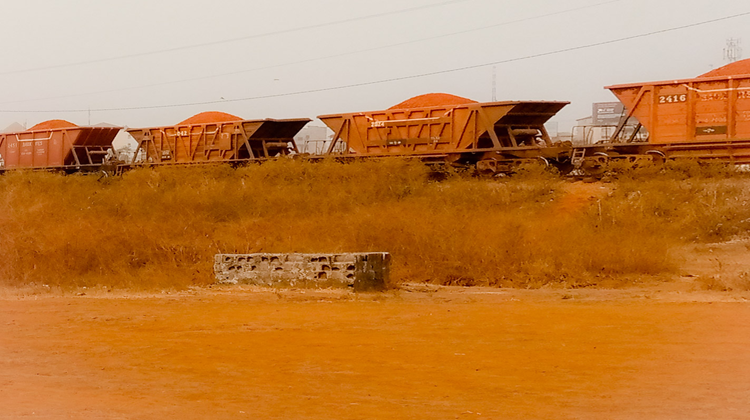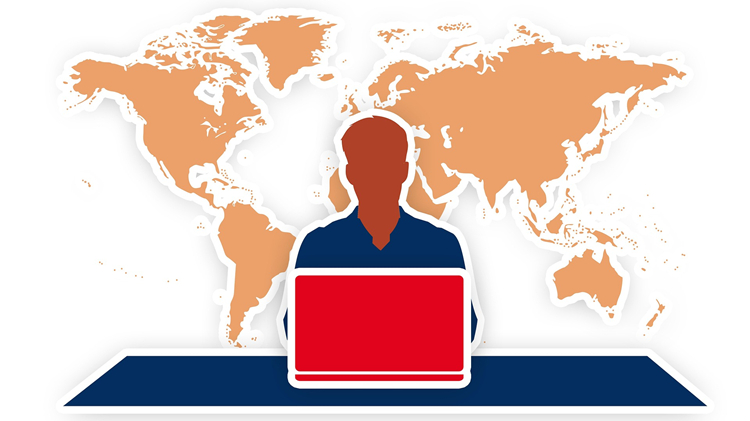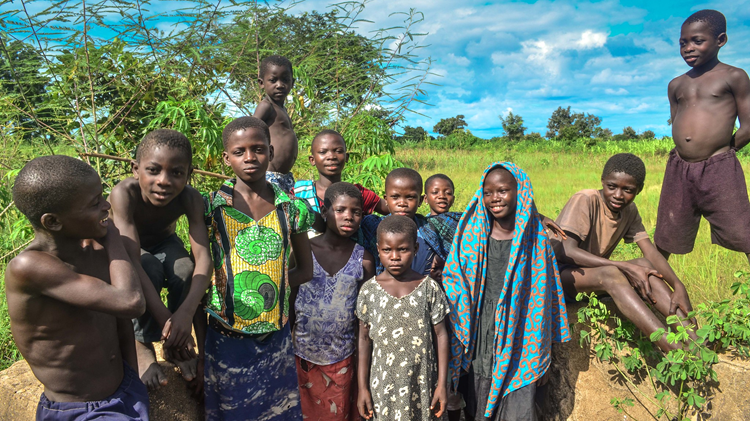Why Africa’s electrification matters to the world
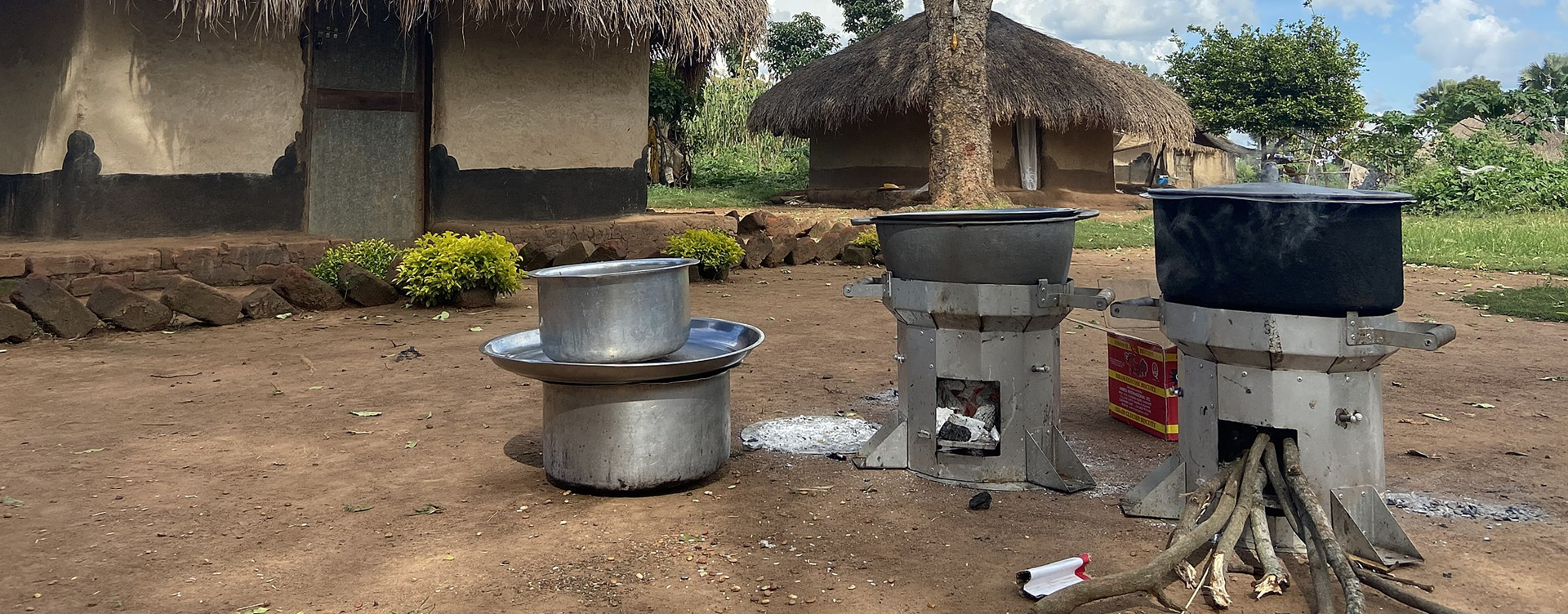
Access to electricity across the continent is rising, yet it is low and unevenly distributed, limiting development.
Only 58% of Africa's population had access to electricity, on average, in 2023 for basic household needs such as cooking or cooling–much lower than in South America and South Asia (Figure 1). This left about 626 million people in the dark and lacking a grid connection, highlighting the significant energy poverty across the continent. Despite its vast energy potential—Africa boasts 60% of the world's best solar resources, for instance—it utilised only 1% of global solar PV capacity, and met only 3% of its electricity generation with solar energy production in that year.
A study by the African Futures and Innovation (AFI), using the International Futures forecasting platform, finds that Africa produced just 5.7% of the world’s energy in 2023, and that production will increase to 6.8% in 2050, a portion vastly out of balance with its large and growing population and development needs. This not only includes electricity but major other energy requirements, such as for transportation, industry and agriculture. The study also shows that, prior to 2023, already 28 African countries were net importers of energy for their overall demand, and this number will rise to 31 African countries importing more than 50% of their demand by 2050.
Only 19.6% of the rural population in low-income African countries had access to electricity in 2019
Although electrification is rising, there are huge disparities between different countries and regions. This disparity is sharp and spatially distinct: rural areas mostly remain disconnected while urban centres have better access. Only 19.6% of the rural population in low-income African countries had access to electricity in 2019, compared to more than 80% in urban centres. In rural lower-middle-income Africa, this figure was approximately 52.2%, while in rural upper-middle-income Africa, it reached nearly 73%. Fourteen African countries have less than 10% rural electricity access, and some, such as the Central African Republic, Sierra Leone and the Democratic Republic of Congo, do not even reach 2%.
At the country level, Egypt, Mauritius, Seychelles and Tunisia provide universal access to their citizens. On the contrary, countries with the lowest electrification include DR Congo and Burundi, with average total access rates of about 21% and 11%, respectively.
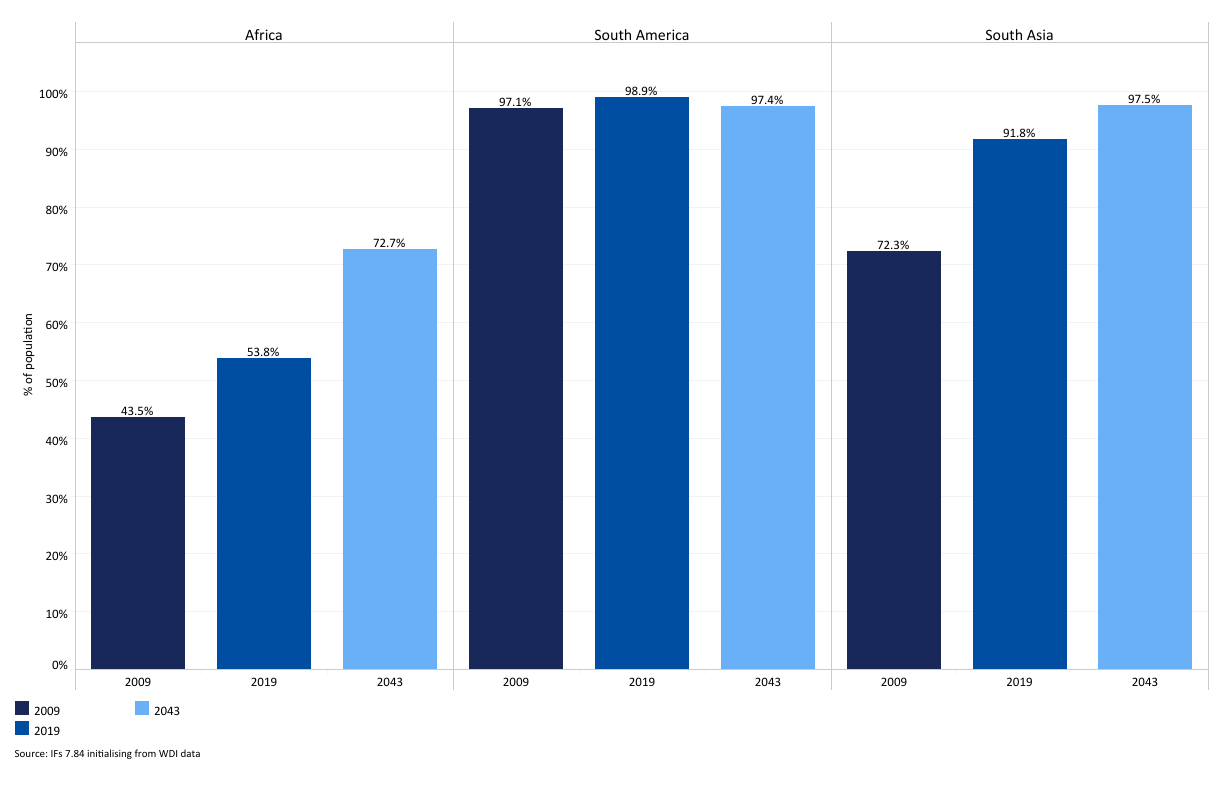
Electrification across the continent has lagged behind due to a combination of poor energy grid infrastructure, affordability issues and lack of public and private investments. The poorly developed grid infrastructure means that Africa loses a large portion of electricity during transmission. Europe and North America, with well-developed grids, lose around 5% of electricity during transmission annually, while the electricity loss in Central, West and East Africa is between 15 and 20%. Another major constraint is that Africa is not running on a single power grid but on five, separate regional power pools: Maghreb, West Africa, Central Africa, East Africa and Southern Africa. This hinders the integration of a shared energy market to reorient efforts for tackling energy transitions.
Why does electrification matter?
Access to electricity is a key driver of human development and economic growth—a catalyst, not just a convenience. Electricity access enables the use of modern technologies, improves educational outcomes, enhances healthcare services and supports the growth of businesses. It supports everyday processes (that are a habit at least in highly developed countries), such as water purification or mobile banking, and has a ripple effect across entire value chains. Access to energy is foundational to development, and above a minimum level, small increases in energy use per person produce dramatic increases in the Human Development Index.
For instance, approximately 1.75 million public health centres and schools lack a reliable electricity supply in Africa. About 80% of businesses in Africa (except in North Africa) experience outages, compared to 66% in South Asia and 38% in Europe, which drives major sales losses. According to a report by IRENA, more than 30 African countries experienced regular outages and load shedding in 2015, with opportunity costs amounting to as much as 2% of their GDP. In 2024, Nigeria’s power grid alone experienced an alarming 11 collapses, and Côte d’Ivoire had key power plants experiencing unplanned outages that cut the national supply by 22%.
In the AFI study, the average electricity access will only extend to 62% of Africa's population by 2030 and to about 72% by 2043, under a business-as-usual forecast, reflecting the huge and persistent challenges. It will be almost impossible to industrialise, modernise agriculture or create decent jobs for Africa’s rapidly growing and youthful population without electricity. With a large part of African economies relying on agriculture, the introduction of modern machinery, efficient irrigation systems and refrigerators could have a major impact on agricultural processes and products. Issues around health, pollution and climate change, among others, call for cleaner equipment and smart technologies.
Europe and other regions should care about African electricity
Regions across the globe have a vested interest in supporting the continent's energy development. Europe, in particular, through its proximity, will experience the consequences of Africa’s electrification challenges in terms of migration, together with effects on international economic partnerships and climate targets. Energy poverty undermines job creation and fuels migration pressures. Emissions reductions cannot be achieved if roughly a billion people rely on biomass and other fuel sources for cooking and heating. Achieving universal electricity access in Africa is not only a moral imperative but a strategic necessity for global development and security.
Europe, in particular, will experience the consequences of Africa’s electrification challenges in terms of migration
African governments, organisations and corporations are making strides in steadily improving electricity access for citizens, for example, through national and regional initiatives such as the African Single Electricity Market (AfSEM) and the Continental Power System Masterplan (CMP). AfSEM, launched by the African Union Commission in early 2021, aims to establish a comprehensive marketplace for electricity throughout Africa to provide greater energy security, sustainability, and competitiveness for all member states. As this requires physical interconnection of the continental energy infrastructure, the African Union Development Agency in 2019 was tasked to lead this development through the CMP for electricity generation and transmission. Tanzania, for instance, recently completed the construction and commenced operation of the Julius Nyerere Hydropower Project, generating 2 115 megawatts.
For Europe, seeing global emissions reductions as a shared goal, supporting Africa’s electrification, particularly through renewables, aligns well with its Green Deal. This enables meeting Europe’s own climate goals through preventing future emissions, while opening up green markets. Both climate and energy cooperation are framed as key to long-term prosperity and fostering geopolitical stability in the EU’s Global Gateway Strategy and the Africa-Europe Green Energy Initiative, through which Europe is already investing in the continent’s energy systems. Funds are channelled into renewable projects, such as via ElectriFI, and Europe supports African utilities and startups through technical assistance, Research & Development collaborations and training.
Addressing the scale of the uneven progress in Africa’s electrification requires collaborative efforts, strategic investments and inclusive policies
Yet, addressing the scale of the uneven progress in Africa’s electrification requires further collaborative efforts, strategic investments and inclusive policies. To bridge the gap, policymakers, investors and development partners should focus on initiatives that are inclusive, sustainable and tailored to the unique needs of different regions and countries across the continent. They should prioritise decentralised energy solutions, public-private partnerships and regionally coordinated planning. For reaching remote and underserved areas and citizens, investments in solar, wind and mini-grid technologies are crucial. And, electricity needs to be affordable and reliable, not merely available.
Africa’s population will double over the next few decades. Thus, its development will be determined by the ability to power businesses, homes and endeavours. The challenge–for the continent and its partners–is clear: access to electricity is the foundation of a just energy transition and a prosperous future.
Image: Laura Toledano/Wikimedia Commons

